The photonic based technology boom of the late 1990s was driven by the need to replace expensive, lag-prone and limited satellite telecom links. These links were based on high frequency radio waves with long-haul fiber optics cables running across continents and oceans.

Image Credit: PI (Physik Instrumente) LP
Prior to the advent of photonics, an expensive long-distance phone call would be subjected to a perceptible pause between a person speaking and this being delivered to the recipient.
This phenomenon was commonplace because these calls were routed via distant geostationary satellites (for example, 1962’s Telstar1), and the transit time from earth base station to satellite and back was clearly perceptible.
Per-minute pricing was high, capacity was limited and data rates were extremely low.
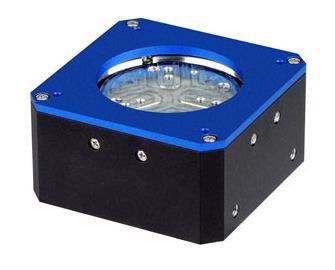
FSM - Fast Laser Beam Steering Mirror Platform - S-335 Piezo Mirror Mount for Fiber Switching
Video 1. A piezo-based two-axis fast laser beam steering mirror (model S-335) directing a laser beam into an 8x8 fiber matrix, showing the mechanical basics required for beam control in free space optical communication. Video Credit: PI (Physik Instrumente) LP
Optical Fiber Networks
Optical cabling rapidly replaced these problematic and delicate links, facilitating the development of a capacious and fast global network that led to the eventual deployment of the Internet - the photonics-based physical web that is a cornerstone technology of the World Wide Web.
The first stages of a vast space-based network of new-generation communication nodes are currently under development, effectively bringing the global communications infrastructure full circle.
Each node is a compact satellite, and thousands of these nodes are being deployed to ensure worldwide coverage.
The nodes link not only to ground stations but also to each other, offering new potential for the rapid, efficient routing of data from any point on the planet to any other.
The long-term goal of this endeavor is to provide an array of physical infrastructure, devices and vehicles with the connectivity required to enable a spectrum of next-generation applications.
Free Space Optical versus Radio Frequency (RF) Communication
RF signals’ limited bandwidth and lack of precision meant that laser beam-based optical communications were necessary to complement traditional satellite communications.
These optical communications offered higher throughput while also requiring less power – a key consideration as satellites have no access to the power grid.
Optical communications afford users improved security; because the optical signal is extremely focused, it is difficult to intercept. Its straightforward propagation also reduces the risk of interference, a common issue in the radio frequency range.
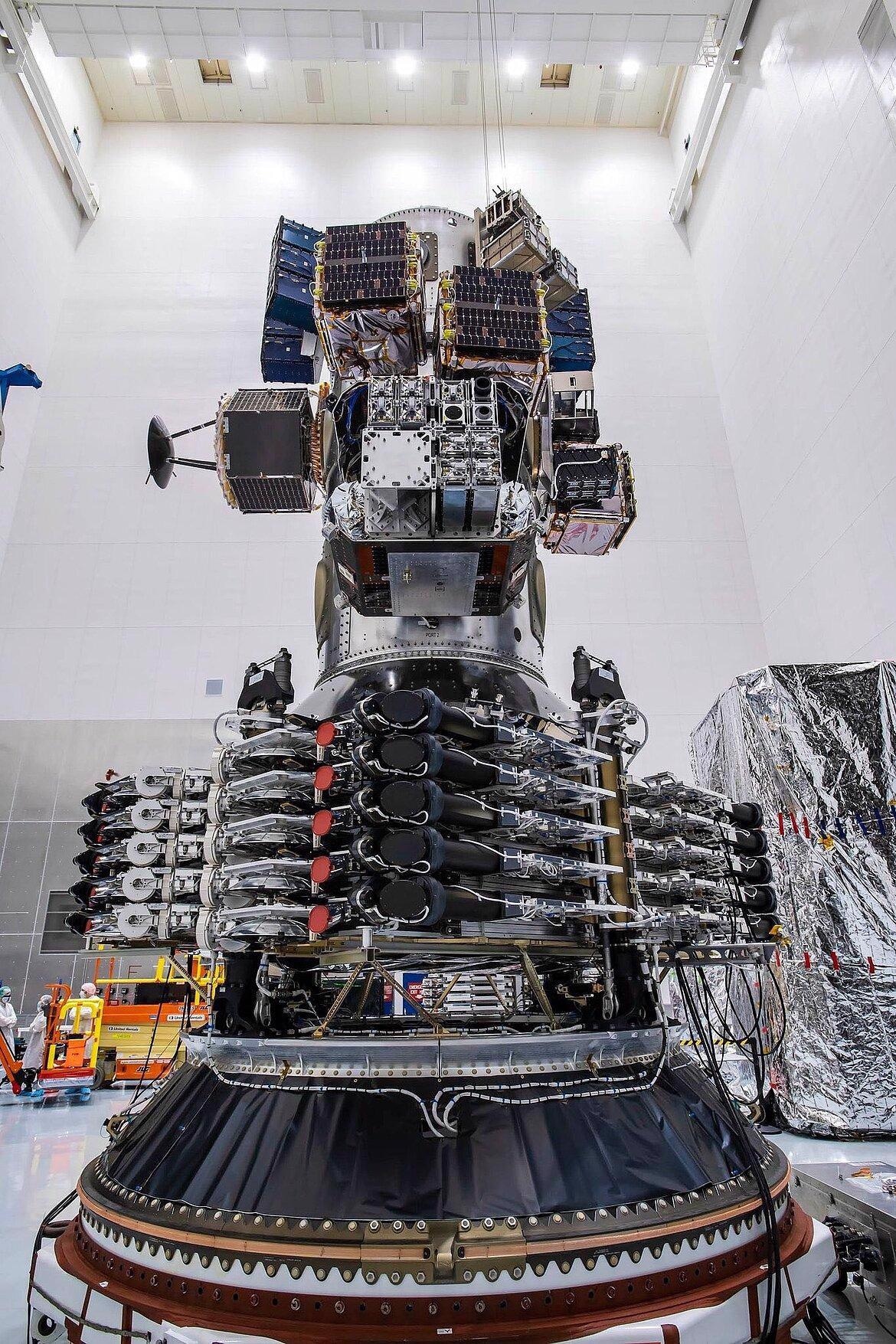
SpaceX's StarLink launch payload, carrying multiple small satellites equipped with laser inter-satellite communications (black cylindrical objects projecting radially). Image Credit: SpaceX
CubeADCS testing
Video 2. CubeADCS test by Hawaii Space Flight Lab (using a PIglide HB spherical air bearing). Video Credit: PI (Physik Instrumente) LP
The inter-satellite links are achieved via delicate laser beams, with each satellite linking to and tracking its neighbors. SpaceX is among the leaders in the field, having completed initial test launches of its laser-equipped satellites very recently.
Posting on social media, SpaceX founder, Elon Musk, confirmed that the launches of these 142 satellites in a single payload featured the initial implementation of the company’s inter-satellite laser links.1,2
Information on its sophisticated link topology is available via YouTube3 and other social media platforms.4
Other organizations working in this area include Amazon, Fraunhofer IOF, Momentus, Arribada Initiative, Lacuna Space and Outernet.
Sub-orbital approaches to ensuring bandwidth are available around the globe and have included Google’s balloon-borne Project Loon6 and Facebook’s now canceled drone-based Project Aquila.
These projects also make use of laser-based interconnect approaches to avoid issues around the crowded spectrum that inhibit broadcast approaches and advances, along with challenging delays and regulatory restrictions.
Deep Space Optical Communications (DSOC)
NASA has stated that “future human and robotic expeditions into deep space must count on the fastest, most efficient means of communicating with mission managers on Earth.”
These expeditions rely on the ability to stream HD video alongside the operating parameters necessary for mission-critical decisions across the vast distances of the solar system.
Work is ongoing to develop laser-based communication technologies offering data rates up to 100X the current rate, without increasing power consumption or size.
Laser light can carry considerably more information than radio frequency transmissions - more than even the next generation of 6G terahertz mobile communication standards based on millimeter wavelengths.
Its propagation speed is bound by the same physical laws, however, meaning real-time communication over vast distances is challenging, and there is still a need for onboard artificial intelligence able to make rapid decisions.
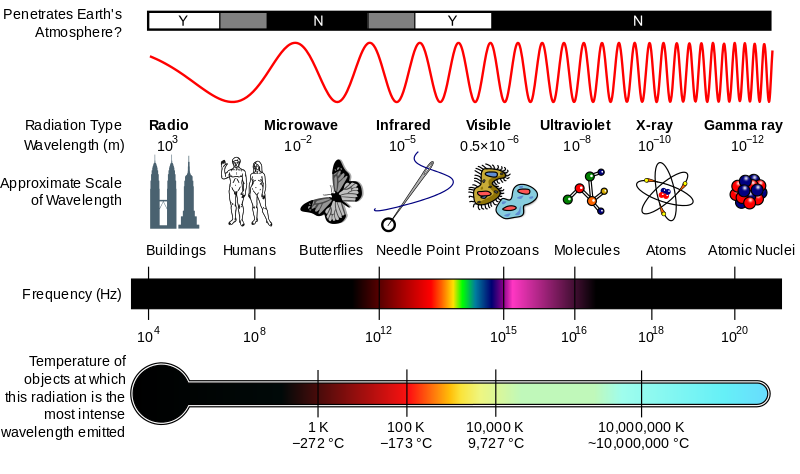
The electromagnetic spectrum. According to Shannon’s theorem, the maximum information a communication channel can transmit per unit time, is directly proportional to the (carrier) frequency of the channel. I.e an optical signal in the Petahertz (1015Hz) range can carry 1000 times the information of a signal in the Terahertz (1012 Hz) range. Image Credit: Wikipedia
Fiberless Photonics Links on Earth
A related approach to point-to-point networking using “fiberless photonics” is currently being rebooted for use on Earth.
The 1990s saw initial commercial attempts at terrestrial free-space optical communications. These were part of the photonics boom, driven by innovators like Optical Crossing, AirFiber, Terabeam and Lucent’s OpticAir.
Like many projects during the photonics boom, these endeavors were focused on the single application of long-haul telecom – a goal that was side-lined after capacity needs had been met for the foreseeable future by the laying of “dark fiber.”
Since then, the industry has begun to face an exponentiating demand for data, driven by a range of applications, including streaming media, social networks, the Internet of Things, personal medicine, autonomous vehicles and Industry 4.0.
Despite the issues in the industry after 2002, the principle behind free-space optical communications remained viable.
Free-space optical communications operate in a fundamentally similar (but much faster) way to optical telegraphy, a technology first developed in the 18th century7 - messages are encoded in blinks of light that are transported from one terrestrial location to another.
This concept offers the potential for the rapid implementation of secure, dedicated photonic interconnects between locations, for example, building to building in a densely populated city or the “last mile” of a wider network.
When they were initially conceptualized 20 years ago, these interconnects required significantly expanded beams. Telescopes on the order of 200 mm aperture were commonly employed to ensure eye safety and fault tolerance should the occasional bird break the beam, for example.
A new generation of innovators is now leveraging advanced error-correction algorithms and efficient electronics to enable implementations with lower costs and higher speeds; for example, Transcelestial of Singapore is offering compact, pole-mounted transceivers with throughput up to 10 GBps.
Why Fast Laser Beam Steering Mirrors?
Laser beams’ low divergence means that precise pointing solutions must be employed to keep the beam exactly on target over the vast distances covered in ground-to-satellite links, satellite-to-satellite links, or deep space communication.
A coarse steering system can be achieved by the satellite attitude system, but a high-speed fine steering system is also necessary to react to vibrations from the satellite, such as stabilization systems.
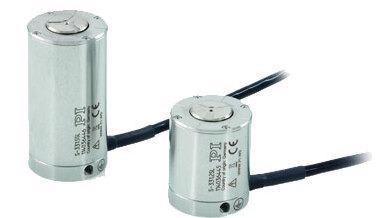
The S-331 ultra-high dynamics piezo tip-tilt laser beam stabilization and steering mirror platforms. Image Credit: PI (Physik Instrumente) LP
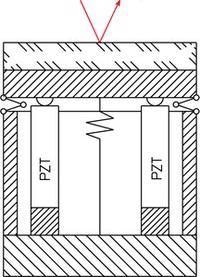
Basic desgin of a fast steering mirror with differential piezo (PZT) actuation (push/pull). One of the advantages is angular insensitivity to temperature changes. Image Credit: PI (Physik Instrumente) LP
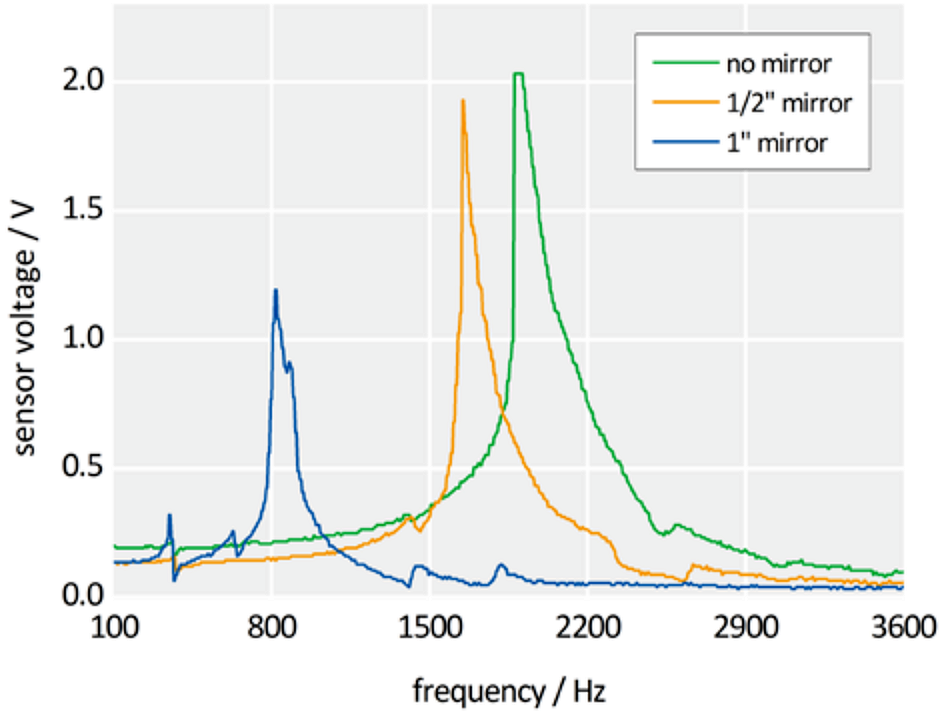
Resonant frequencies of the long throw S-335.2SH fast piezo steering mirror with different loads: 1” mirror, ½” mirror, no load. Units, such as the S-331, provide higher operating frequencies, however at smaller angular range. Image Credit: PI (Physik Instrumente) LP
Earth-to-satellite communication must also contend with atmospheric turbulence, which may shift the beam from its original path, while at the receiving end, the laser beam must be coupled into a single mode fiber which needs very high accuracy to ensure there is no optical power loss.
Piezoelectric or electromagnetic fast steering mirrors (FSM) can offer mechanical bandwidth up to the kHz range and angular resolution down to the nanoradian range. FSM’s are compact, rapid and accurate enough to accommodate the disturbances common to these applications.
Piezo-driven FSM’s deliver higher bandwidth and resolution, while electromagnetic units (typically voice coil driven FSM’s) can accommodate larger steering angles.
PI’s fast steering mirror technology has been utilized in both space-based and terrestrial testing and implementation since the 1990s.
The company’s fast and efficient designs are based on piezoelectric or electromagnetic actuation, with solutions including a wide range of off-the-shelf laser beam stabilization products and confidential custom products.
References
- Wikipedia entry on Telstar: https://en.wikipedia.org/wiki/Telstar
- Elon Musk on Twitter: https://twitter.com/elonmusk/status/1353408098342326276?s=20
- https://wccftech.com/spacex-starlink-satellite-laser-test/
- SpaceX StarLink routing topology visualized: https://www.youtube.com/watch?v=AdKNCBrkZQ4&feature=youtu.be
- Online and social media resources include Wikipedia (https://en.wikipedia.org/wiki/Laser_communication_in_space) and Reddit (https://www.reddit.com/r/spacex/)
- https://loon.com

This information has been sourced, reviewed and adapted from materials provided by PI (Physik Instrumente) LP.
For more information on this source, please visit PI (Physik Instrumente) LP.